02:03
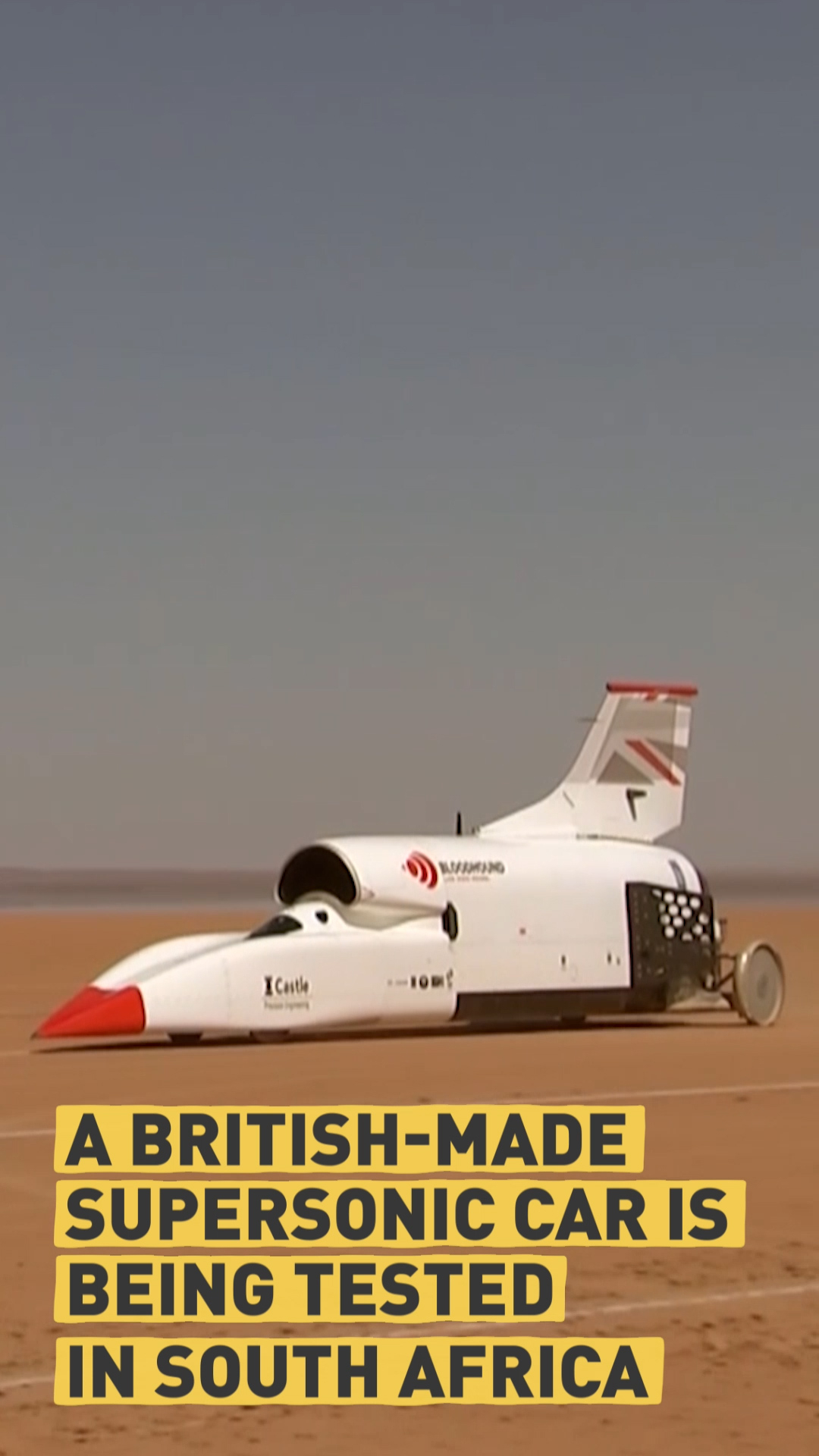
The world's most advanced racing car made has been tested to its limits in the Kalahari Desert in South Africa.
The British built Bloodhound has been designed to travel up to 1,000 miles per hour (1,609 kilometers per hour).
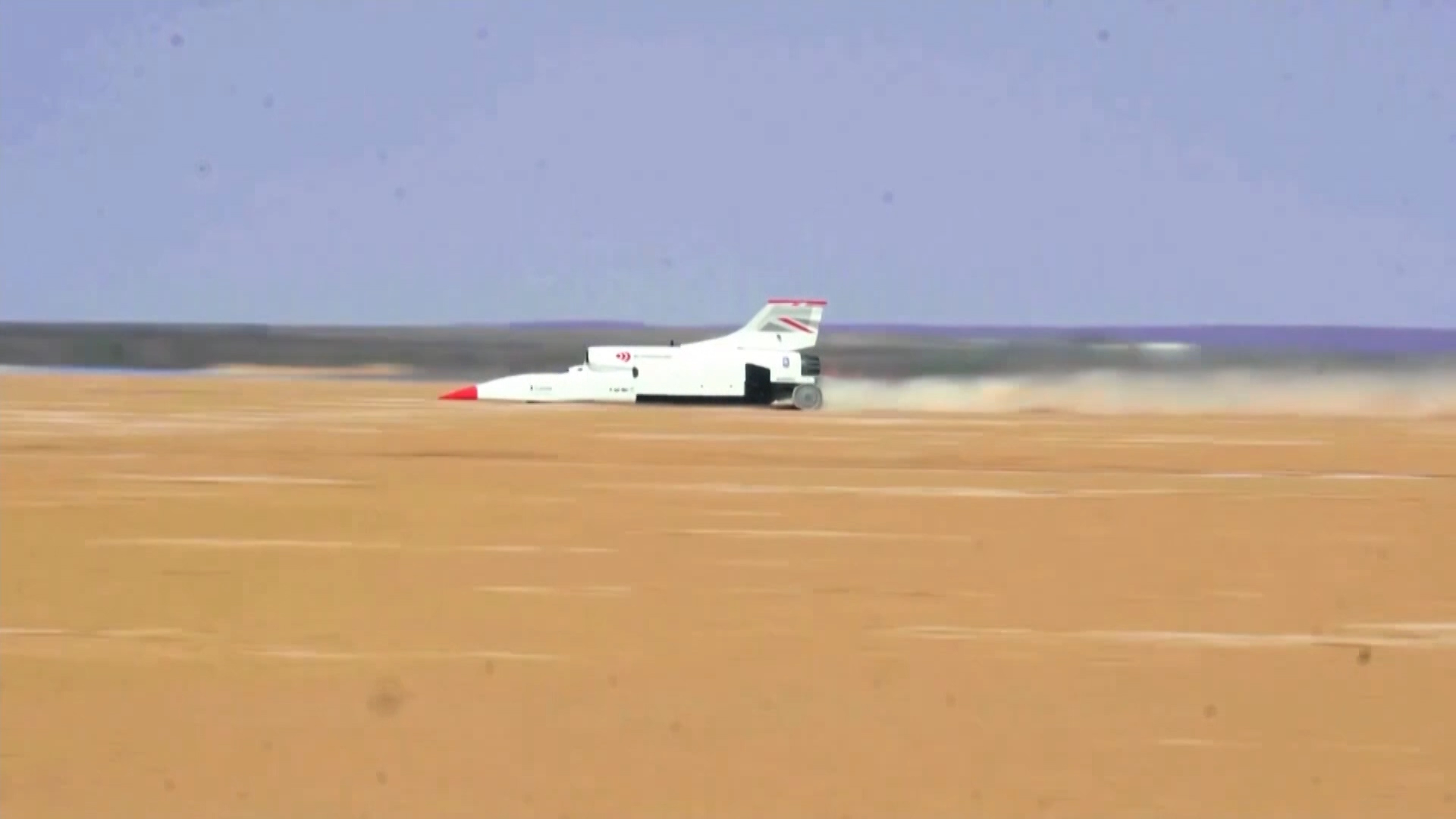
British racing car Bloodhound could be the next fastest car in the world.
British racing car Bloodhound could be the next fastest car in the world.
The racing car weighs six tons and has been built by engineers with the latest technology to perfect its performance. Bloodhound is powered by a fighter jet engine and next year a rocket will be added to the car making it faster than the speed of sound.
The racing car is completely controlled by the cockpit and so far during test runs it has reached a speed of 500 mph.
Andy Green, who has been driving Bloodhound in the test runs says: "Bringing Bloodhound out here to South Africa is about taking the world's best straight-line racing car here to the world's best high-speed race track to attempt to smash the world land speed record.”
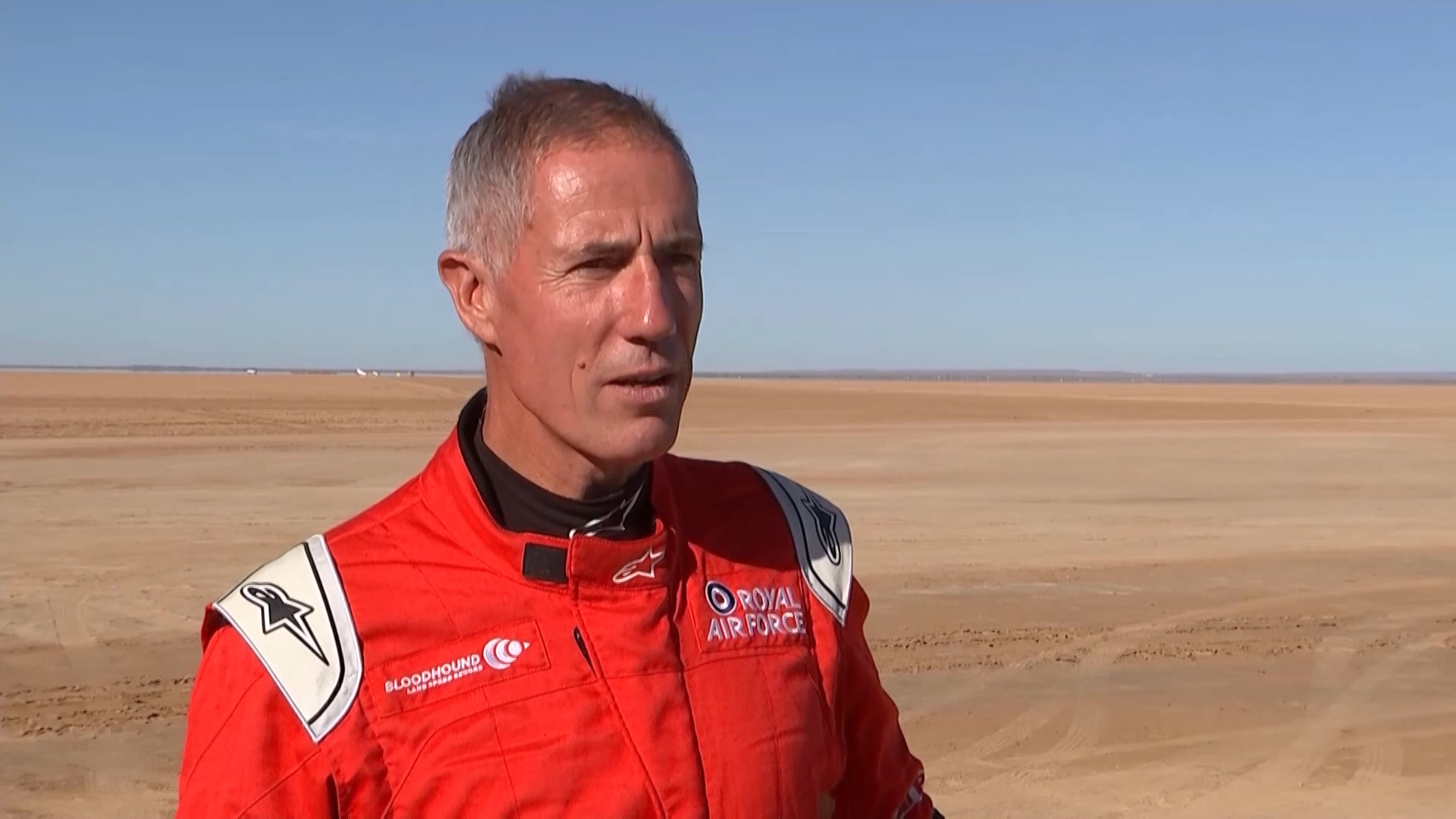
Andy Green has been driving Bloodhound in the test runs.
Andy Green has been driving Bloodhound in the test runs.
Each run is planned to perfection to the very last detail. As the speed increases, so do the risks.
The team in the desert is small but hundreds of people have helped the project develop and get this far. One of the members of the team that flew out to South Africa said: "It's fantastic to be on the other side of the world, in the middle of the Kalahari Desert because now this is all about turning Bloodhound theory into Bloodhound reality."
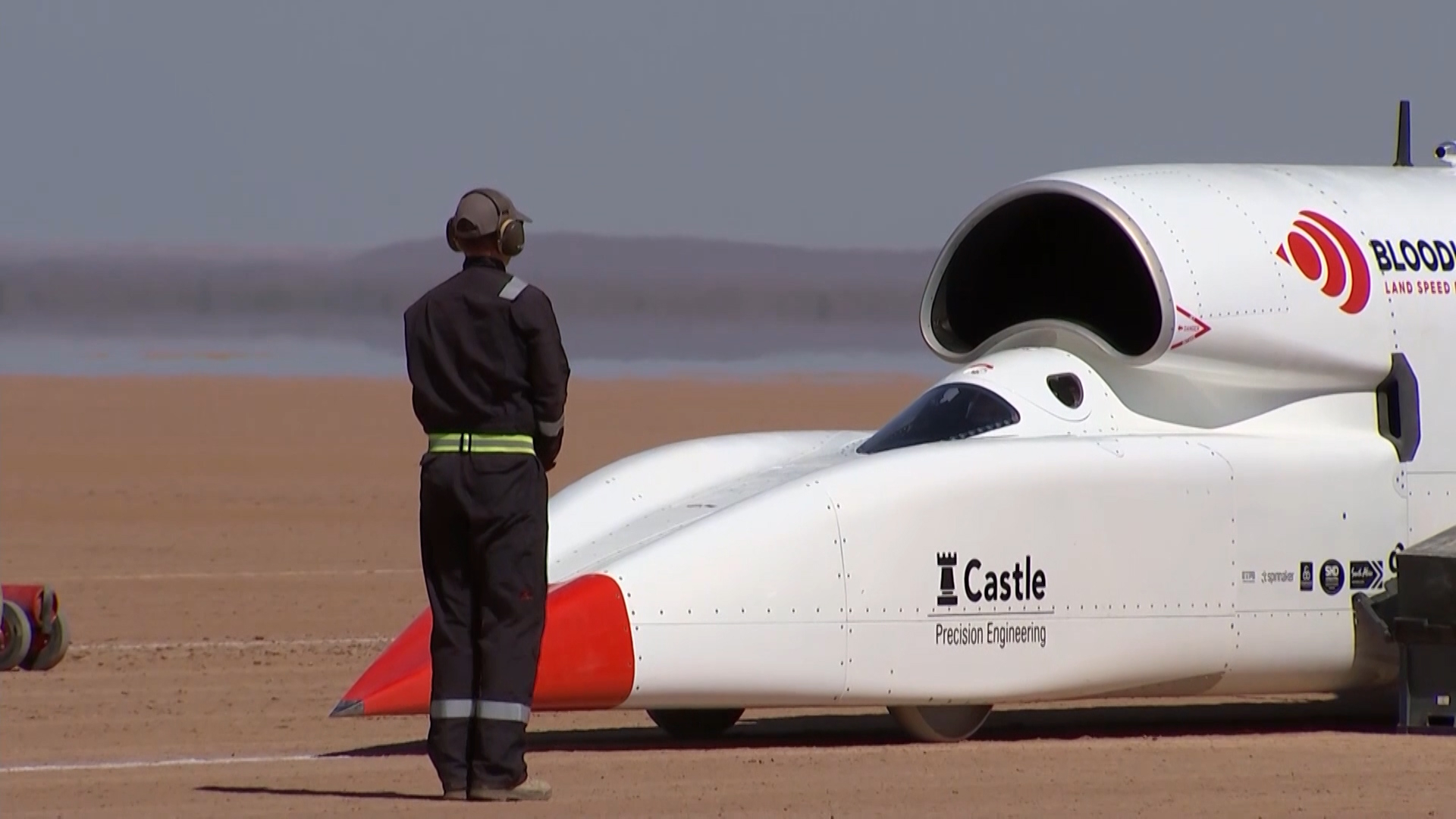
Bloodhound reached a maximum speed of 500 mph in the first test runs.
Bloodhound reached a maximum speed of 500 mph in the first test runs.
The funding comes from Ian Warhurst, who stepped in to save the project when the car went into administration. He hopes the project will be of inspiration to scientists in the future to try new things and it will push the boundaries in engineering. "The other reason I got involved in the project is because the previous project had been so fantastic, inspiring people to get into engineering and, as I look forward into the world of where we are going, we need more engineers to design more things and develop new things," Warhurst says.
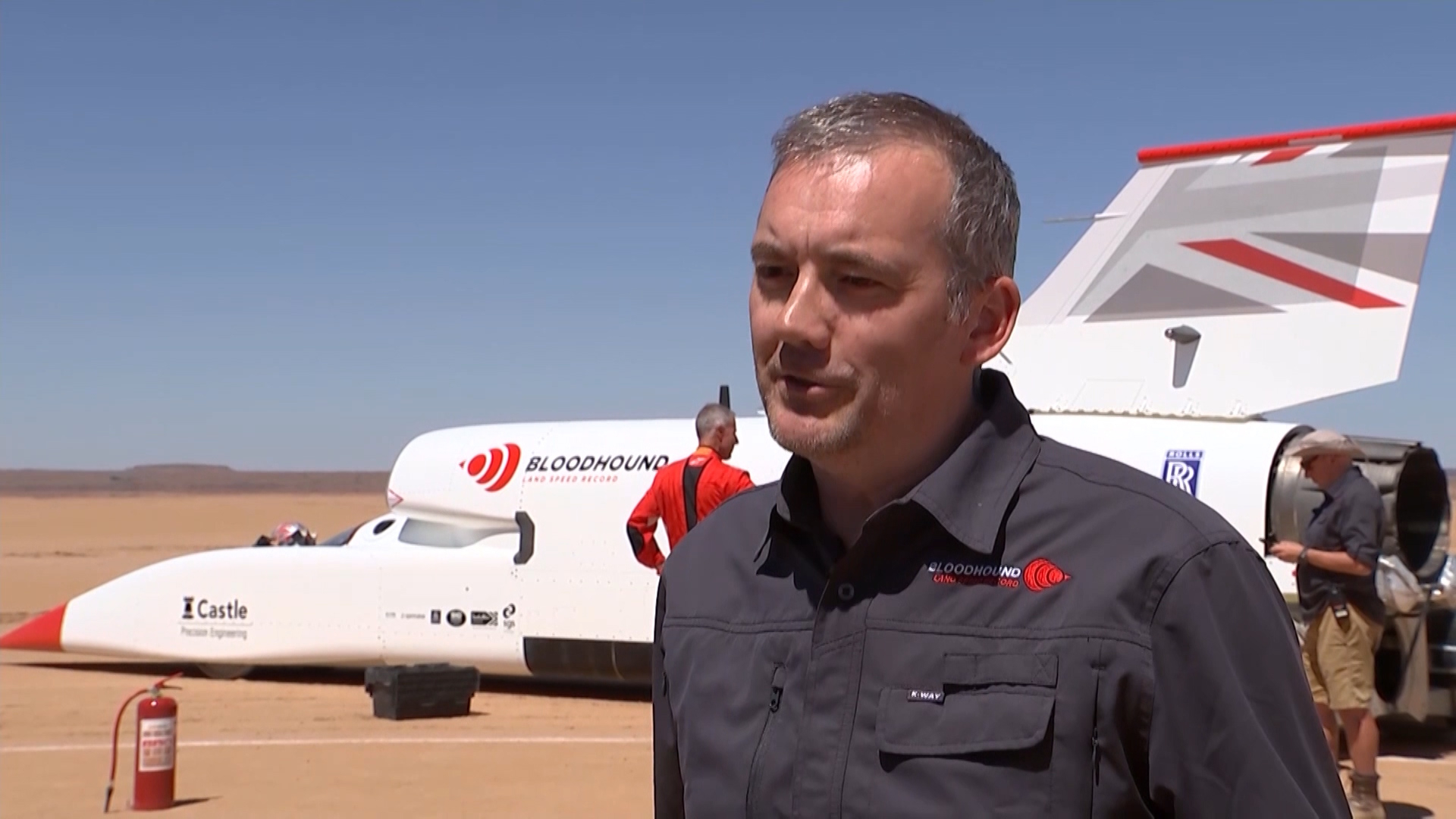
Ian Warhurst says the Bloodhound project is about pushing engineering
boundaries.
Ian Warhurst says the Bloodhound project is about pushing engineering
boundaries.
The current land speed record is 763 mph and it hasn't been broken in 22 years. Bloodhound will try to smash that record in the Kalahari Desert next year while continuing to increase scientific knowledge and test human endeavor.
The car is now being shipped back to the UK for further development.